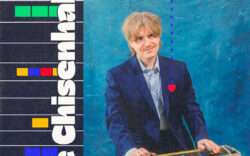When authors Brigette Adair Herron and Scott Creney, each of Tunabunny and each recognized as an award-winning writer, first conceptualized their new collaborative book on the B-52s, the pair originally conceived of the project as a straightforward critical analysis of the group’s music. What they produced with The Story of the B-52s: Neon Side of Town was not just that, but an uncovering of a heretofore mostly whispered history of gay and queer life and associated activism in the Classic City circa 1970s, a robust exploration of the critical role UGA’s art school had in shaping both local culture and creative minds, and how these and other factors likely, and often seemingly necessarily, played a role in the creation and buoying of the group that may forever occupy the role as “the ultimate party band.”
Originally slated for release by the University of Georgia Press, the book was published recently to much acclaim by London, England’s Palgrave Macmillan. Flagpole was able to speak with the authors briefly following their quick book tour around the Northeast in advance of their virtual appearance for Avid Bookshop. Currently living in New York state, they have plans to return to town later this year for an in-person event. Some items have been edited for length and clarity.
Flagpole: When you had the first kernel of an idea for a book specifically about the B’s, did you imagine it being one that was part and parcel of this specific (i.e. queer) history in Athens, or did that take form more as your research continued?
Brigette Adair Herron: Definitely the latter.
Scott Creney: Initially, we thought most of the book would just be our analysis of the band’s music. As we learned more about their story, and how tied it was to their music, the more it turned into a critical biography.
FP: The actual text of the book is very much of one voice. But, as a practice, how did you make this happen? Was it the work of one of y’all doing most of the “typing” or was it an effect of editing?
BAH: It always began first as a conversation. Then, Scott assembled the material into a loose narrative, and I gave feedback. Once Scott had a solid draft, we would sit together, and I’d read it out loud. We’d make notes about what worked and what didn’t.
SC: It was fairly painless, in the sense that Brigette and I have pretty similar ideas about what’s good. There were a lot of debates, but we were always trying to get to the same place.
FP: The number of footnotes is positively nuclear.
SC: It’s an Oppenheimer tribute. Finger on the pulse.
FP: So, given that, was this number of citations an imperative or simply something nice to do?
SC: In telling the band’s story, we wanted that story to be told by the band members themselves as much as possible. This meant quoting them at length, and making sure we cited where the quote came from. We also hid some good jokes and asides in the footnotes as well. Easter eggs for the dedicated readers.
FP: There seems to be a mood that it was slightly disappointing for the band to lean into its “party band” status.
BAH: Not a disappointment.
SC: I’d say it hurt their critical reputation.
FP: At first, you seem to frame that embrace as a protective stance for their personal lives, but eventually it just became a path-of-least-resistance career reality.
SC: I think there was also a fear of seeming pretentious. They weren’t going to present themselves as an arty band like Gang of Four or Wire.
BAH: Being a party band is just one aspect of their identity. Their power comes from their complexity, and anything that presents an oversimplified version of the band does them a disservice.
FP: End-to-end, how long would you say you worked on the book? From concept to completion?
BAH: About six months in writing. The editing process was stop-and-start over the next year.
FP: How did you discern what to include and what to jettison?
BAH: While it’s tempting to include every last detail… whatever is superfluous can always go in a footnote.
SC: We kept having to remind ourselves that this is a book about the B-52s, not necessarily everything that we find fascinating. The audience wants to read about the B-52s, not Scott’s opinions about NYC art in the 1980s.
FP: During the process of research and writing, did y’all come upon any other book ideas? Things you’d like to explore?
BAH: We thought someone should do a book about the UGA art department in the ‘70s, especially one that incorporates what was happening through the Georgia Museum of Art and the events there.
SC: I realized I would love to assemble a book of Vic Chesnutt lyrics laid out like poetry.
WHO: A Virtual Evening with Scott Creney and Brigette Adair Herron
WHEN: Thursday, Aug. 17, 7 p.m.
WHERE: Zoom
HOW MUCH: FREE! (RSVP required on avidbookshop.com)
Like what you just read? Support Flagpole by making a donation today. Every dollar you give helps fund our ongoing mission to provide Athens with quality, independent journalism.










